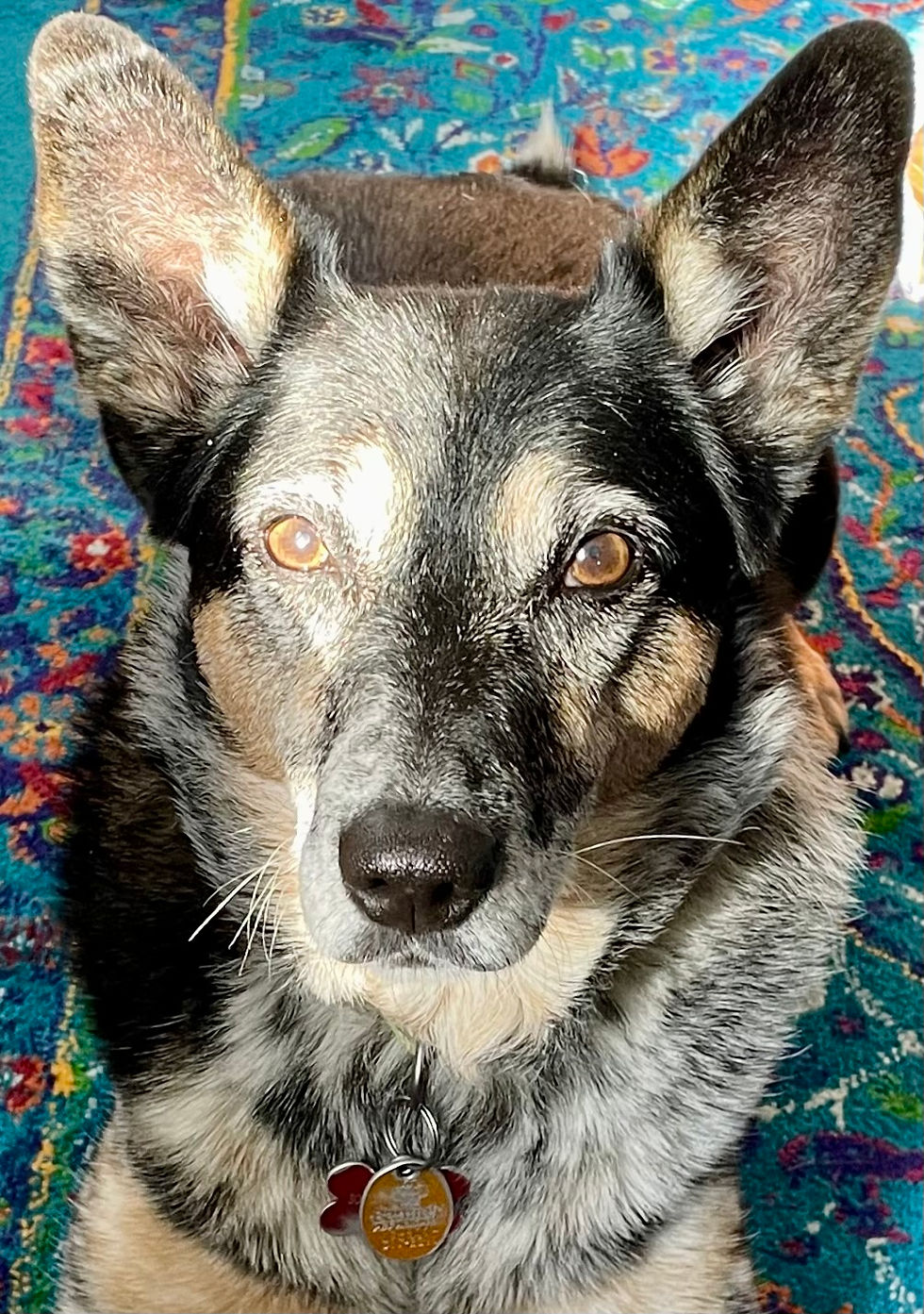DOES YOUR DOG REALLY KNOW SIT?
- Virginia Dare

- Aug 3, 2020
- 4 min read
Updated: Oct 1, 2021
We humans are a very verbal species. Our dogs are not. Yet when we train, we often assume the most salient cue to the dog is some word we’ve selected for a specific behavior. I’m not saying dogs can’t learn verbal cues. They sure can, lots of them. But at least initially, dogs are also relying on various body signals in order to perform the requested behavior correctly.
It’s important to identify these extra signals because they may be the ones that matter most to a dog, even though their use is accidental or unconscious on our parts. If we don’t know that we’re accidentally giving additional cues, we won’t understand why a behavior falls apart when those accidental cues are no longer given. We may think the dog understands our verbal cue as the one clear signal that tells them to emit a specific behavior. But it’s rarely as simple as that, unless you make a conscious effort to avoid or eliminate extraneous cues during the training process.
Let’s take SIT as an example. And let’s say you first taught the behavior by using a food lure to help the dog move into the SIT position. Each time you made that luring signal you also said the word, SIT. After a bit of training, you felt confident the dog knows what the word SIT means.
Except, why doesn’t he respond to the verbal cue when you’re holding something in your hands and can’t make the hand signal? In most cases, if you give a hand signal and a verbal cue simultaneously, the hand signal is more salient to the dog and it essentially blocks awareness of the verbal cue. So if you want him to really learn the meaning of the verbal cue, you need to say SIT first and then make the hand signal. Now he has a chance of registering the verbal cue and eventually tying it to the actual behavior of sitting, and you'll be able to fade away the need for the hand signal.
Still using the SIT example above, why might a dog ignore a SIT cue when he’s standing off to your side? Likely it’s because most of us teach this skill while standing face to face with the dog. And without additional training, a dog may be confused about what to do if you give the verbal cue when you’re not face to face. In other words, your body position as well as the verbal cue are necessary signals for him to be able to respond correctly.

Here are some fun little tests to try at home if you think your dog already knows what the word SIT means. (No cheating! The cue should be given just once.)
Stand in front of your dog, but purposely do not give him eye contact as you say SIT
Say the word SIT in the voice of Gollum
Crouch down and then say SIT
Recline on the sofa and then say SIT
Stop midway as you’re walking down the stairs with your dog and say SIT (don’t do this if you’re concerned about safety)
Stop at a shallow puddle and then say SIT
Say SIT while a squirrel is doing the Macarena on your head. (Please video this!)
Here's another example. I've been working with a wonderful client and her very clever dog. The skill we were working on is “go settle”, where the dog walks over to a designated mat and lies down there. It’s a super-handy skill, and this dog really enjoys doing it.
During a recent lesson, the client happened to give her dog the “go settle” cue while standing still, and the dog was confused about what behavior to offer. After a few more attempts, and with me having the clear benefit of being an “outside observer”, I spotted a number of additional/accidental cues the client typically used, cues the dog was relying on in order to perform the behavior correctly. These additional cues included the client stepping in the direction of the mat, and a hand pointing or a chin-jutting movement toward the mat. (Tip: video yourself while training and all those unconscious cues will be revealed upon replay!)
We also tested and confirmed the dog doesn’t yet recognize the “go settle” cue if the client is seated while saying it.
Why does this all matter? Well, the client ultimately wants to give the “go settle” cue while she is already seated on the sofa. So, training will continue with this goal in mind, and with an eye toward eliminating some of those extra body cues. I’ve no doubt they’ll achieve success with a bit more training.
Virginia Dare is a certified dog trainer & behavior counselor with decades of experience. Her business offers live video consultations anywhere in the US for training and behavior help, matchmaking services, and pre- and post-arrival counseling for new puppies. She also provides in-home, private lessons and behavior consultations in northern Fairfield and Westchester counties, western New Haven county, Putnam and southern Dutchess counties.
Please visit www.NorthStarCanines.com/services to learn more, or contact me at 804.784.0120



Comments